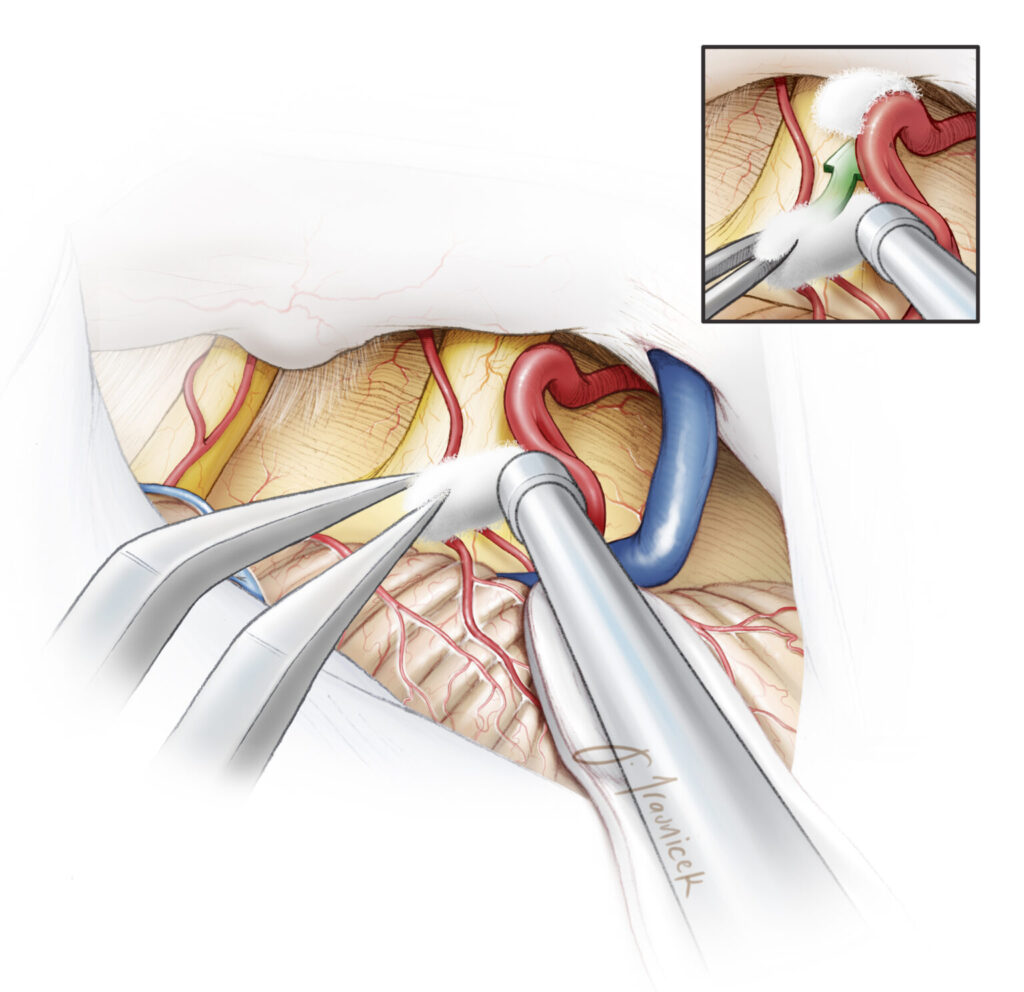Microvascular Decompression / Hemifacial Spasm
Microvascular decompression for Trigeminal Neuralgia / Hemifacial Spasm
Microvascular decompression is a surgical procedure for patients who have trigeminal neuralgia, glossopharyngeal neuralgia or hemifacial spasm. We provide this option for patients who have trigeminal neuralgia, glossopharyngeal neuralgia or hemifacial spasm. Any of these conditions can result from a vein or artery compressing one of the cranial nerves. When this occurs, every pulse of blood through the vessel irritates the nerve, triggering stabbing facial pain and muscle spasms.
Our first line of treatment is always medication. A variety of drugs can relieve the pain or spasms, but if they prove ineffective, the next step is surgery, and most often we turn to microvascular decompression.

In this procedure, the surgeon moves the offending blood vessel away from the affected nerve and inserts a tiny Teflon pad between the two; this keeps them apart and buffers the nerve from the blood vessel’s pulsations. Alternatively, the surgeon may insert a small sling to pull the blood vessel away from the nerve.
While considered the most invasive surgery for these conditions, microvascular decompression is also the best way to fix the underlying problem. It causes the least damage to the nerve and does the best job of freeing patients from pain or spasms and reliance on medication. More than 90% of patients gain long-term relief from their symptoms.
What is Hemifacial Spasm?
Hemifacial spasm is a rare disorder that causes facial muscle spasms. Women are diagnosed twice as much as men and the average age of patients is usually 40-50 years old. Most often, it’s due to compression of the seventh cranial nerve (CN-VII) in the brain by a displaced artery or vein. Other causes may include an injury, tumor or Bell’s Palsy.
Though it’s not life threatening, hemifacial spasm causes uncomfortable symptoms that often get worse over time. Besides physical symptoms, hemifacial spasm can also affect social and work life. The physical symptoms may include:
- Unilateral facial twitching
- Changes in hearing
- Clicking sound in the ear
How do you treat hemifacial spasm?
Because of its rarity, hemifacial spasm is often misdiagnosed. Other related conditions, such as blepharospasm, are typical diagnoses for patients. However, blepharospasm causes bilateral symptoms, meaning they occur on both sides of the face. In contrast, hemifacial spasm only affects one side of the face (unilateral). In some cases, it may also be diagnosed as anxiety or even a dental problem.
Misdiagnosed patients may receive prescription medication for treatment, usually anti-anxiety medication or anti-convulsants. One of the most common treatments for diagnosed hemifacial spasm is Botox. While Botox injections may temporarily reduce symptoms, it is not a permanent solution. The only known permanent solution is microvascular decompression (MVD) surgery.
Looking for Neuro
Surgeon?
Simply give us a call and book an appointment for yourself. We are here to help. Walk into our Hospital and let us take a closer look to suggest the best treatment you need.
